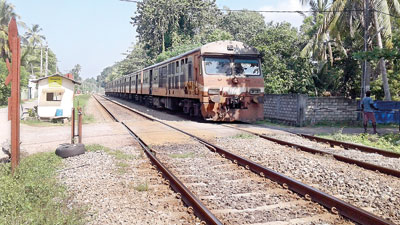News
More deaths at protected railway crossings

The site of last Sunday's tragedy in Wadduwa
Far more railway crossing accidents occur at protected rather than unprotected crossings, Railways Department records show.
There were 62 accidents resulting in nine deaths on protected level crossings this year compared to 15 on unprotected ones with no fatalities.
Last Sunday alone, five people lost their lives at a crossing in at Poddaramulla, in Pothupitiya, Wadduwa. The victims, aged from 45-60 years, had been drunk and disregarded the railway gate-keeperâs warning, Wadduwa police said.
Along the 1500km of rail track in Sri Lanka are 128 crossings protected by electrical barriers and 139 mechanised barriers. A hefty 758 crossings are unprotected and a lesser number have farm-type gates.
Police are blunt about the cause of most accidents. âIf you analyse the manner in which these accidents have taken place, it is clear that most of the time the cause is, not whether the railway crossing is protected or not, but the driverâs recklessness,â Deputy Inspector General (DIG) Priyantha Jayakody of the Police Public Relations and Media Co-ordination Division said.
A contributory reason for accidents is that extensive building along the coastline, mainly by people squatting in areas where they do not have lawful permission to build, has led to the formation of informal pathways and lanes that intersect railway lines unofficially. Providing protection for such intersections can prove to be difficult.
There also are places where the road is broad, thereby causing practical difficulties for using barriers. In such instances, only a half-barrier is used and sometimes cyclists and passengers creep through the small gap.
The public should realise that not every single crossing can be barrier-protected because this requires regular attention and maintenance as well as funding and other resources, a Railways Department official who wished to stay anonymous said.
âIn a country drowning in financial crises and other economic issues, allocating resources to place gates at every single crossing would be a problemâ, the official said.
Departmental statistics show there were 165 persons killed in railway accidents this year.


